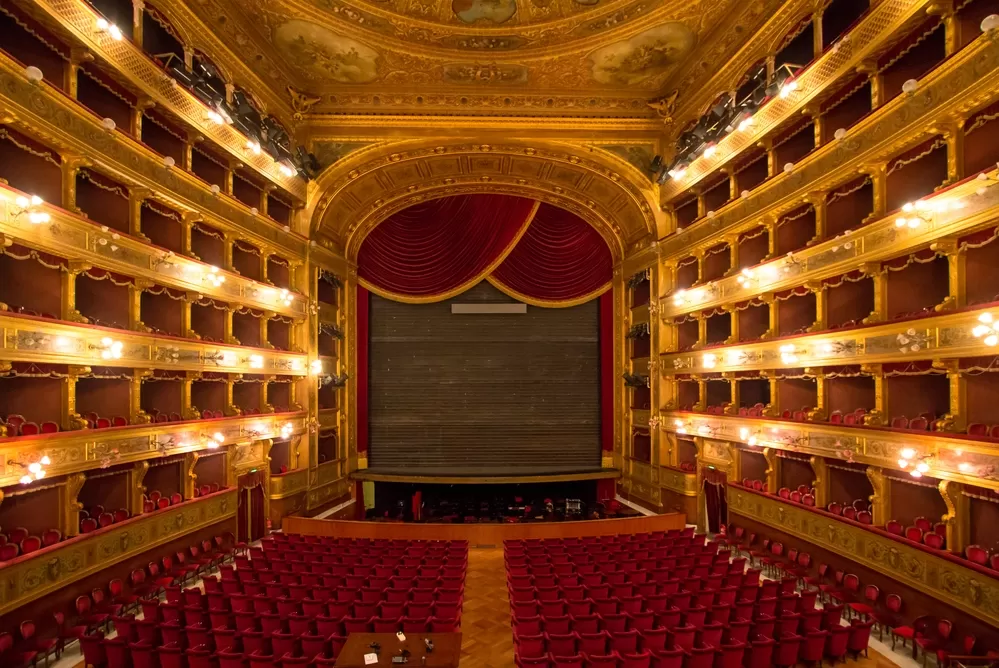
Immersive theater breaks away from the conventional format of traditional theater and invites the audience to actively participate in the performance, blurring the boundaries between fiction and reality. This evolution in theatrical experiences has breathed new life into the art form, captivating audiences in ways that conventional theater often cannot.
The history of immersive theater traces back to the early forms of performance art such as tableaux vivant, ancient Greek performance arts, and Commedia dell'Arte.
In the late 20th century, immersive theater continued to progress, often drawing on stylistic influences from various artistic mediums such as film noir. Film noir's dark and atmospheric style inspired immersive productions that aimed to transport the audience into a world of mystery and intrigue.
Immersive theater has become a popular and widely recognized art form that offers a unique and personal experience for each individual audience member. From traditional theater to contemporary performance, the history of immersive theater has evolved and expanded, embracing a wide range of artistic styles and forms.
Immersive theatre has a rich history that dates back centuries, with early forms of this immersive art form emerging in various cultures and periods throughout history. From the ancient Greek performances in the round to the interactive and improvisational nature of Commedia dell'Arte in the Renaissance era, immersive theatre has continuously evolved and pushed the boundaries of conventional theatrical experiences. These early forms of immersive theatre laid the foundation for the contemporary performance style, where audience participation and personal experiences in a physical space have become central elements.
Ancient Greek performance arts, such as tragedy and comedy, held immense significance in the culture of ancient Greece. These forms of performance were entertainment and a way to explore and express complex ideas, emotions, and societal issues.
Tragedy, characterized by its serious and somber tone, explored themes of human suffering, fate, and morality. Comedy, on the other hand, provided a lighter and humorous take on everyday life and social satire. These performances took place in open-air theaters, allowing for a wide range of audience participation and engagement.
The influence of ancient Greek performance arts on immersive theatre is undeniable. Just like in ancient Greece, immersive theatre aims to transport the audience into a completely different world and engage them physically, emotionally, and intellectually. The use of physical space and interactive elements in immersive theatre can be traced back to the ancient Greek amphitheaters, where the audience was an integral part of the performance.
The idea of blurring the boundaries between the audience and performers, a key characteristic of the immersive theatre experience, can be seen in the ancient Greek concept of "catharsis." Catharsis refers to the emotional purging and cleansing experienced by the audience through the performance, allowing them to empathize and connect with the characters and themes presented.
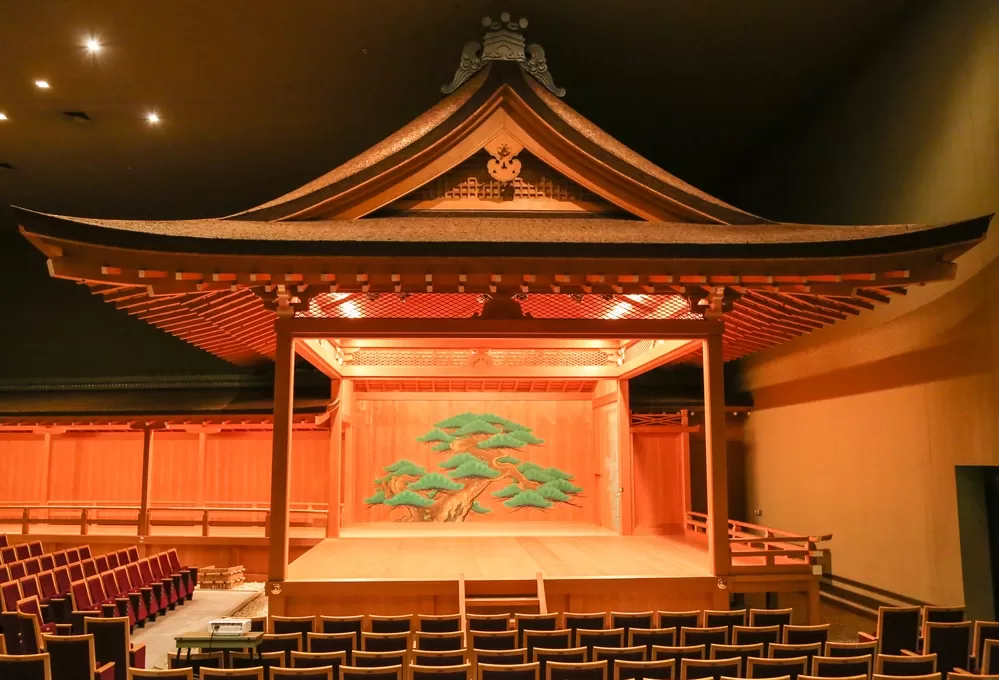
Japanese Noh Theater, originating in the 14th century, has a rich history and distinctive characteristics that have greatly influenced immersive theater and contemporary performance. Known for its elegant and refined style, Noh Theater combines elements of dance, music, and poetry to create a mesmerizing experience.
Noh Theater's influence on immersive theater is seen in its emphasis on creating a transformative and captivating environment for the audience. In Noh performances, the actors deeply explore their characters, often using masks to symbolize different emotions and personalities. This use of masks echoes the use of memorable and recognizable characters in immersive theater, where the audience is drawn into a world of captivating personas.
Music is another key element of Noh Theater that has influenced immersive performances. The haunting and rhythmic chants, accompanied by traditional instruments such as the flute and the drums, create a hypnotic and immersive atmosphere. This integration of live music and soundscapes is a key characteristic of immersive theater, where the audience is enveloped in a multi-sensory experience.
Noh Theater's stylized movements have had a significant impact on contemporary performance. The deliberate and slow movements of the actors in Noh create an entrancing and otherworldly effect. Immersive theater often incorporates physicality and choreography to engage and captivate the audience.
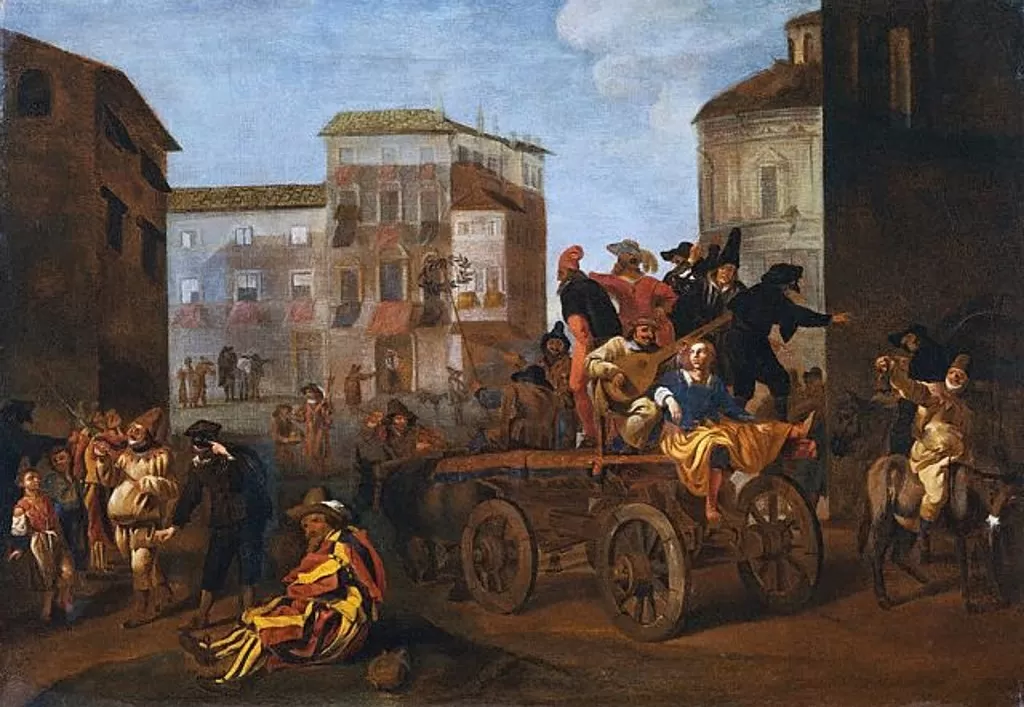
This work is in the public domain in its the United States and other countries and areas where the copyright term is the author's life plus 100 years or fewer.
Commedia dell'Arte, a 16th-century Italian theater style, played a pivotal role in developing immersive theater. Known for its use of stock characters, improvisation, and physical comedy, Commedia dell'Arte created a unique and interactive experience for its audience.
The stock characters of Commedia dell'Arte, such as Harlequin, Pantalone, and Colombina, provided a foundation for immersive theater to build upon. These characters were easily recognizable archetypes, each with their own distinct traits and behaviors. Theater often relies on memorable and recognizable characters to engage the audience and create a sense of familiarity within the performance.
Improvisation in Commedia dell'Arte performances allowed actors to adapt and respond to the audience's reactions in real time. This spontaneous interaction between performers and the audience fostered a sense of engagement and participation. Improvisation helps blur the lines between actors and audience members, creating a more immersive and personalized experience.
Physical comedy was another hallmark of Commedia dell'Arte. The exaggerated gestures, slapstick humor, and acrobatic stunts performed by the actors delighted and entertained the audience. This physicality is often incorporated into contemporary immersive theater productions to create dynamic and visually engaging experiences.
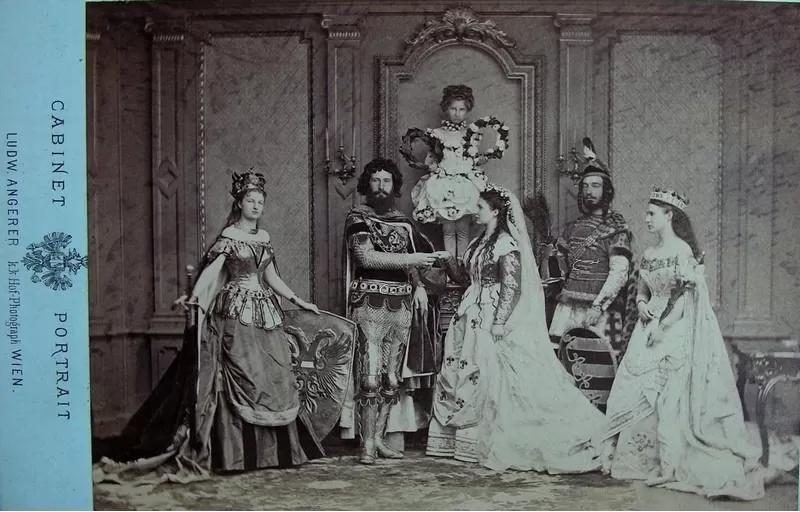
This work is in the public domain in its country of origin and other countries and areas where the copyright term is the author's life plus 100 years or fewer.
Tableaux Vivant, an early form of immersive theater, originated in the late 18th century and was popularized during the 19th century. Tableaux vivant, which means "living pictures" in French, involved performers posing as still images to depict various scenes. This form of immersive theater allowed the audience to experience the creation of a living artwork.
In Tableaux Vivant, performers would pose in elaborate costumes and makeup, mimicking the subjects of famous artworks. These scenes were often presented in large halls or theaters, giving the audience a sense of being surrounded by the living artwork.
Tableaux Vivant's immersive nature made it unique, allowing audience members to interact with the performers and become part of the living artwork. Spectators could walk around the scenes, observe the performers up close, and even touch certain props or costumes. This created a personal experience, blurring the boundaries between the audience and the performers.
Modern theatre experiences have revolutionized the traditional theatrical form by breaking down the barriers between performers and the audience. Combining elements of performance art, interactive theatre, and environmental theatre, modern immersive theatre blurs the line between fiction and reality, transporting spectators into a realm where they become active participants in the unfolding narrative. Modern immersive theatre has emerged as a powerful and transformative art form, from site specific productions in unconventional spaces like abandoned buildings or blocks of flats to fully interactive shows where individual audience members shape the outcome through their choices.
Contemporary performance art has revolutionized the way audiences engage with theater by breaking down the traditional boundaries of the art form. This avant-garde genre strongly emphasizes audience participation and blurs the line between spectator and performer. Immersive theater, a subgenre of contemporary performance art, takes this concept to a new level.
Immersive theater creates a personal and interactive experience for each individual audience member. Unlike traditional theater, where the audience remains passive observers, immersive theater invites participants to participate actively in the performance. This creates a more immersive and engaging experience and challenges the audience's perception of what theater can be.
Contemporary immersive performance art also incorporates a wide range of mediums and technologies to heighten the immersive experience. Physical spaces are transformed into interactive environments, allowing the audience to explore and interact with the set. From virtual reality to projection mapping, technology plays a role in enhancing the audience's engagement and blurring the line between reality and fiction.
Film noir has significantly influenced the style and aesthetics of immersive theater, bringing its distinct elements of moodiness, suspense, and visual storytelling into the realm of live performance.
One of the defining features of film noir is its moody lighting, characterized by stark contrasts between light and shadow. This atmospheric lighting technique has been masterfully translated into immersive theater, with dimly lit spaces and strategically placed spotlights creating an evocative and mysterious ambiance.
Another staple of film noir is the presence of femme fatales, seductive and enigmatic women who often play a pivotal role in the plot. Immersive theater skillfully incorporated this archetype, using performers to interact with the audience and embody the allure and intrigue of femme fatales. These interactions not only create a more immersive experience but also allow the audience to delve deeper into the narrative and develop a personal connection with the characters.
Suspenseful and intricate plots are also a hallmark of film noir, and immersive theater has embraced this element wholeheartedly. Immersive theater experiences often feature complex storylines that unfold around the audience, engaging them in solving mysteries, making choices, or even becoming part of the narrative itself. By incorporating the suspenseful and intriguing nature of film noir plots, immersive theater keeps the audience involved in the unfolding narrative.
In immersive theater, the use of physical and digital spaces is crucial in creating captivating and immersive shows for the audience. Physical spaces significantly bring the performance to life, often utilizing unconventional and unique locations. Abandoned buildings, warehouses, or even a block of flats can be transformed into immersive theaters, providing a dynamic and immersive setting for the audience.
These physical spaces are carefully chosen to enhance the overall experience and immerse the audience in the world of the performance. The architecture and design of these locations add depth and authenticity to the narrative, creating a sense of realism and transporting the audience to a different time or place.
Immersive theater also utilizes digital spaces to enhance the interactive and immersive nature of the production. Virtual reality (VR) and augmented reality (AR) technologies are employed to create digital environments and overlays that seamlessly blend with the physical setting. These technologies allow the audience to explore virtual worlds, interact with digital characters, or experience fantastical elements within the performance.
By combining physical and digital spaces, immersive theater productions can fully engage the audience's senses and create a truly immersive experience. The meticulous choice of physical locations and the seamless integration of digital technologies contribute to a heightened sense of realism, immersion, and interactivity, making immersive theater a captivating and unique art form.

Immersive theater has significantly contributed to escape rooms' rise and popularity, merging the world of theatrical performance with interactive gameplay. Escape rooms, which challenge participants to solve puzzles and complete tasks to escape a locked room, have significantly benefited from the immersive techniques and concepts developed in theater.
Interactive performances have long prioritized engaging the audience as active participants rather than passive spectators. Escape rooms have adopted this ethos, where participants are immersed in an interactive story and take on the role of protagonists. They must use their problem-solving skills to unravel the narrative and progress in the game.
In immersive experiences, narratives unfold in real time, and the audience is encouraged to influence the direction of the story. Escape rooms incorporate this concept by presenting players with branching storylines and decisions that affect the outcome of the game. This creates a more dynamic and engaging experience, enhancing immersion and replay value.
Moreover, the physical environments created in immersive theater have greatly enhanced the immersive nature of escape rooms. Just as immersive theater productions transform traditional performance spaces into detailed and immersive worlds, immersive escape rooms utilize physical sets, props, and atmospheric elements to transport players into different scenarios and time periods.
Immersive theatre has evolved to encompass a wide range of productions, offering audiences an array of unique and captivating experiences. From intimate and personal encounters to large-scale and extravagant productions, immersive theatre has pushed the boundaries of traditional performance art. These productions span various genres and styles, catering to diverse audiences with different interests and preferences. The creative teams behind these productions continually strive to innovate and experiment with different formats, creating immersive experiences that transport audiences into vivid and mesmerizing worlds. Immersive theatre has also ventured into unconventional spaces, such as abandoned warehouses, historical buildings, or even entire blocks of flats, transforming these locations into immersive and theatrical environments. With its versatility and ability to break the barriers between audience and performer, immersive theatre continues to captivate audiences worldwide with its wide range of productions and limitless possibilities for storytelling.
Audience participation in theatrical performances takes various forms, allowing audience members to actively engage with the immersive theatre production and become part of the experience. One prominent example is immersive theater, where participants can directly interact with performers and contribute to unfolding the narrative. This can involve engaging in conversations, exchanging information with strangers, or even becoming a character within the performance.
Interactive experiences may include moments where audiences are invited to physically interact with the set, props, or other elements of the performance space. By touching, moving, or manipulating objects, participants can actively shape the environment and influence the direction of the narrative.
Decision-making is also a key component of audience participation. In immersive theater, audiences are often presented with choices that directly impact the outcome of the performance. This gives them agency and the power to shape their own experience. For example, in an immersive theater production, audiences may vote on which character's storyline to follow or decide on the fate of a particular situation.
Immersive theater techniques can be effectively utilized in team building challenges to create engaging and interactive experiences. By incorporating elements of immersive theater into team building activities, social interactions are fostered, and a party-like atmosphere is created.
Immersive theater, focusing on audience participation and active engagement, provides a unique platform for team building. Participants are encouraged to step out of their comfort zones, work together, and communicate effectively to complete challenges. This not only promotes teamwork but also strengthens interpersonal relationships within the group.
The interactive nature of immersive theater allows participants to fully immerse themselves in the experience, encouraging them to participate and collaborate actively. This increased engagement and agency empower individuals to take ownership of their actions and decisions, fostering a sense of responsibility within the team.
The party-like atmosphere created by immersive theater enhances the overall experience, making team building activities more enjoyable and memorable. Participants are more likely to be enthusiastic and motivated, increasing productivity and effective teamwork.
Using immersion in team building challenges can yield numerous benefits; it encourages social interactions, creates a fun and engaging atmosphere, and enhances the team's overall effectiveness. By incorporating immersive theater techniques into team building activities, organizations can foster stronger bonds among team members and create a positive and cohesive work environment.
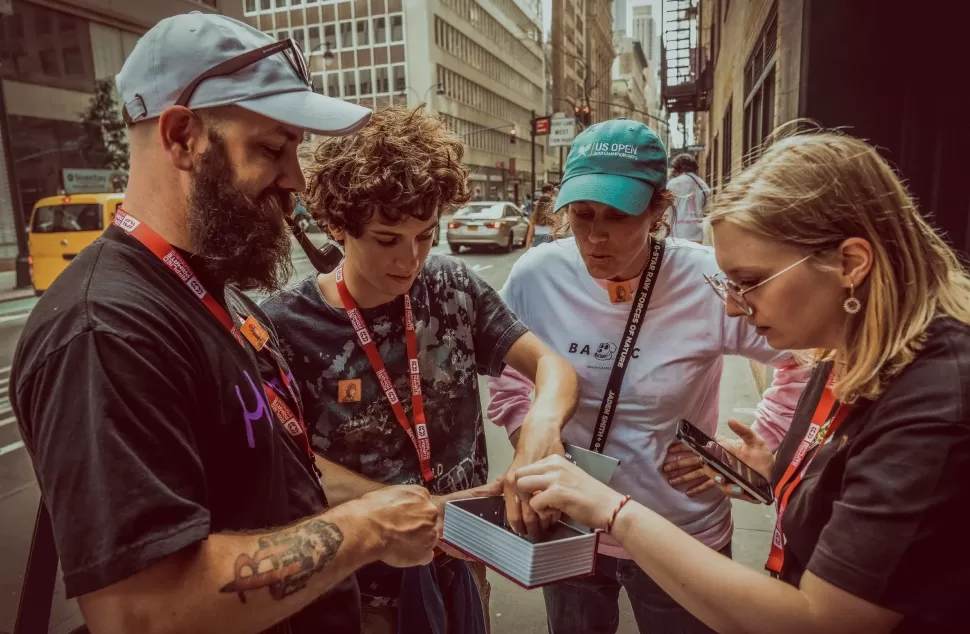
The Great Gotham Challenge was built on the foundation of the immersive world of theater and film. Its founders run film companies and immersive event production companies and build every team building challenge to be interactive experiences that evolved from immersive theater. Their challenges work on a foundation of immersion by forcing its participants to consistently question the limits of the immersive world by including real-world elements the players must interact with to progress in their games. Every GGC game creates a unique world around you that includes puzzles and challenges in ways you wouldn't think possible. The Great Gotham Challenge takes place on the streets of New York, making the entire city part of the game.
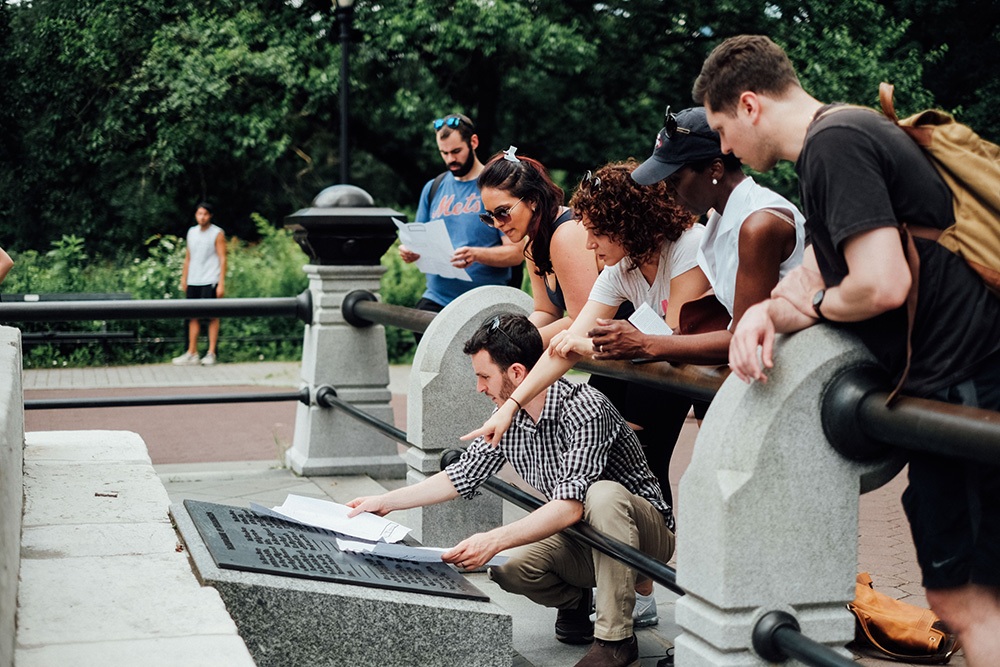
In this ultimate guide, we will take you through NYC's best corporate events.
Corporate Events In NYC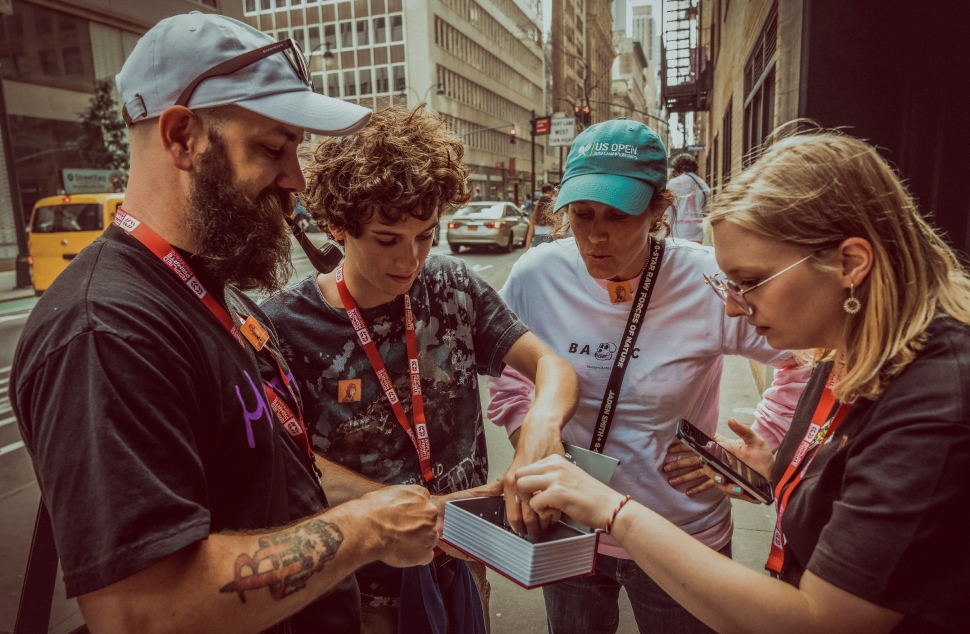
Team outings boost morale, enhance communication and collaboration skills.
Team Outing Ideas
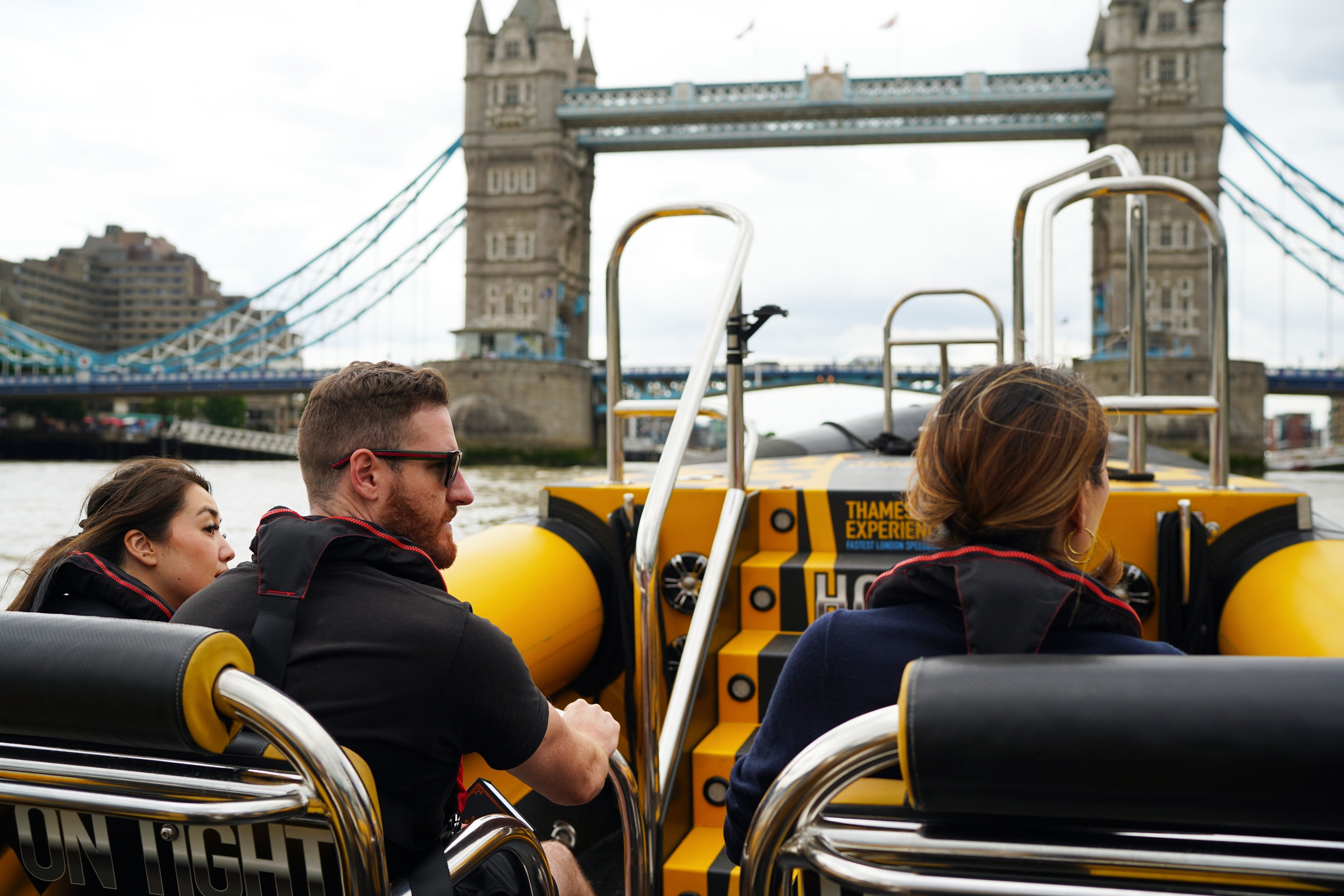
"We had high expectations and they were far exceeded. The challenges were difficult, extremely creative, and completely customized to our group. Suffice it to say our group couldn't have possibly had more fun. Thank you for making me look great!"
"I'm always very skeptical of these "team-building" events, but this one was over the top. They successfully handled our 120-person team, with puzzles that were really challenging. The whole experience couldn't have been more engaging!"
"One of our directors told me it was one of the best organized online challenges they've done."
"[The challenge] shattered any expectations I had. For a fully remote event, I expected a bit of cheesy fun, but the production quality is unbelievable. I absolutely recommend everyone to try it."
"To quote one of my teammates: "This [challenge] was mean and hard, and resultantly perfect." Thank you for the stellar experience, service, and fun."
"For a few hours, you get to feel like a secret agent as you traverse the mundane real world with a VIP pass for curated wonder."
"A mixture of live actors, custom puzzles, and clues built around pre-existing and famous structures in lends the event a sort of glam DaVinci Code energy."
To book our three most popular challenges for under 50 people:
Book InstantlyFor all other experiences or inquiries:
Get a quote






For advance notice on public events and special early bird discounts, please sign up for our communique below: